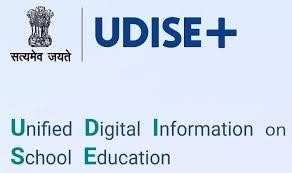Government Schools Close Infrastructure Gap with Private Ones
Why in the news?
The UDISE+ report reveals significant infrastructure improvements in government schools, including electricity, toilets, libraries, and ramps, achieving near parity with private schools while narrowing the urban-rural gap over the past decade.
Highlights of the UDISE+ Report:
Significant Improvements Over a Decade
- The latest UDISE+ report highlights notable improvements in government school infrastructure from 2013-14 to 2023-24.
- Over 80% of government schools now have functional electricity, boys’ and girls’ toilets, handwash stations, ramps, and libraries.
- Functional electricity in government schools doubled from 45% in 2013-14 to 90% in 2023-24, and computer access tripled from 15% to 51%.
Urban-Rural Gap Narrowing
- Rural schools have made significant progress, with over 75% equipped with basic facilities like drinking water, toilets, libraries, and playgrounds by 2024.
- Rural schools surpassed urban schools in ramp availability and regular medical checkups.
- However, rural schools still lag in advanced facilities like internet connectivity, computers, and rainwater harvesting systems.
State-Wise Comparisons
- States like Bihar, Odisha, and West Bengal showed remarkable improvement in functional electricity, increasing from under 50% in 2013-14 to over 80% in 2023-24.
- Kerala consistently maintained over 90% in computer availability, while states like Chhattisgarh and Haryana also demonstrated significant progress.
- Government schools outperform private schools in ramp availability, a trend consistent since 2013-14.
UDISED Plus Report:
- A comprehensive study on school enrollment, dropout rates, teacher count, and infrastructural facilities (toilets, buildings, electricity).
- Launched in 2018-2019 for faster data entry, reduced errors, improved quality, and easier verification.
- Aims to collect detailed data on school resources and factors.
Performance Grading Index (PGI):
- An evidence-based analysis of the school education system in States and Union Territories.
- States/UTs are graded into 10 levels based on a total score of 1000 points.
- Grades range from Level 1 (scores above 950) to Level 10 (scores below 551).
- Evaluates performance across 70 indicators in five domains: learning outcome, access, infrastructure, equity, and governance.
- Data drawn from UDISE+ 2020-21, NAS 2017, and Mid Day Meal Portal.
- Aims to promote evidence-based policymaking and identify intervention priorities for quality education.
The report underscores India’s efforts to bridge the infrastructural gap between government and private schools, highlighting a positive trajectory in ensuring equitable access to quality education across urban and rural areas.
Sources Referred:
PIB, The Hindu, Indian Express, Hindustan Times




